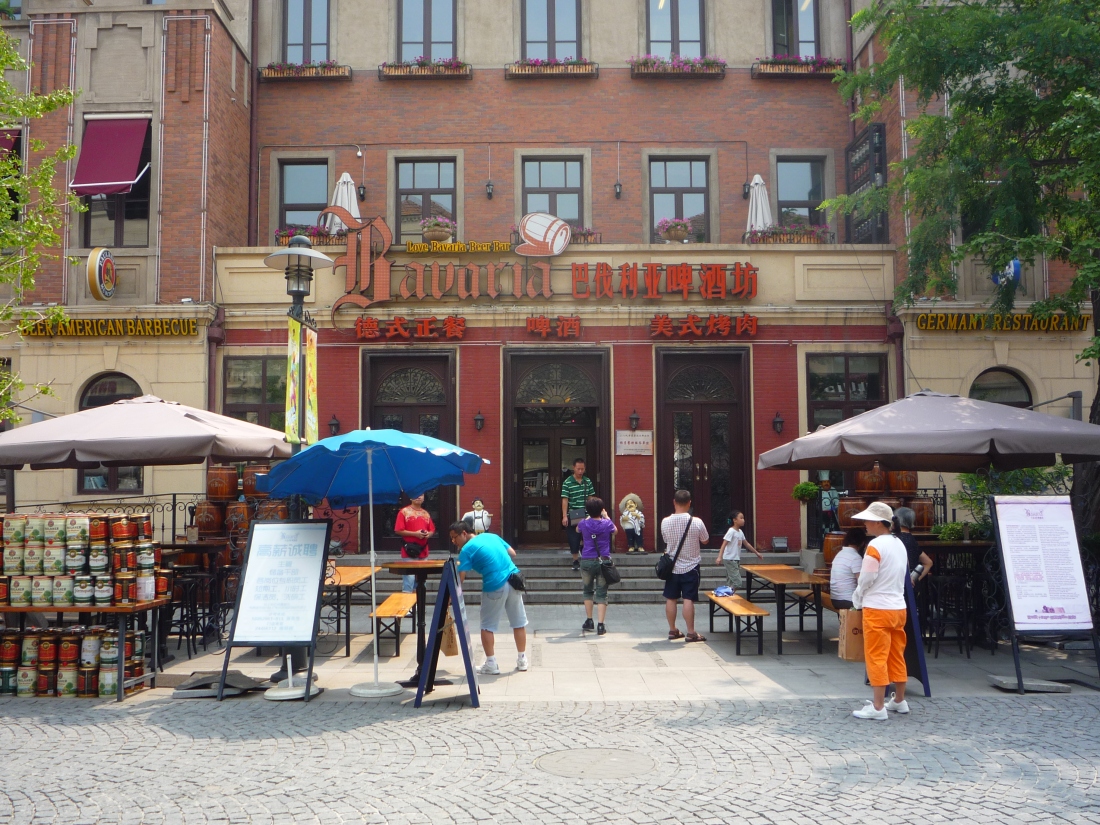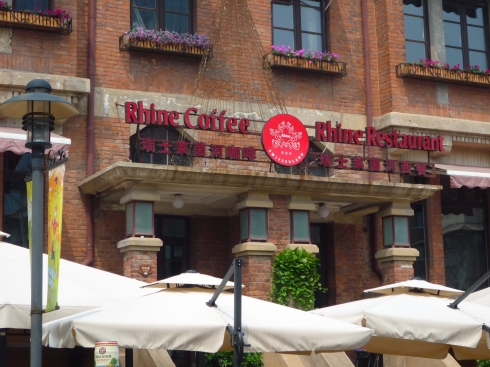Tianjin, like Shanghai, is a ‘concession city’. In the mid 19th century, through diplomatic and military pressure, foreign countries had obtained full administrative control over enclaves of urban territory there. Tianjin had the most number of foreign concessions in China. Not only were the usual suspects present (France, England, the US and Japan), but also marginal powers, like Italy, Austria-Hungary, and even Belgium.
This varied foreign presence left architectural traces, making Tianjin into a ‘Museum of World architecture’ for the sake of tour guides – and for European visitors, an interesting experience of displaced familiarity.
The range of styles is somewhat reminiscent of Melbourne, with a mix of Corinthian, art deco, Victorian, and even neo-Venitian.
This concession history left a mixed heritage. Although the official story at the Museum of Tianjin is one of imperialism and abuse, the city takes a certain pride in its European heritage. Because of it, Tianjin – like Shanghai – is a ‘modern’ Chinese city, like New York or Melbourne can be. It is a 19th-20th century city, where trams, electric lights and steel architecture seem to have always been here. One architectural sign of this modernity is certainly the art-deco style of many Department stores and buildings, a reminder of Tianjin’s apex in the 20s, when it was still on a par with Shanghai.
But interestingly, whereas Shanghai has reclaimed its French concession as the core token of its sophisticated elegance and nightlife cosmopolitanism, Tianjin has chosen to focus on its Italo-German past. Touristically, the recent redevelopment of Tianjin has favoured the most innocuous concession: the Italian one. Its main street has been turned into the ‘Yidaly Feng Jie’, the ‘Italian style street’, a mini-shopping district with beer bars and murano glass shops.
The place is where you can find all things exotic and eurotic. You can find a range of international restaurants, from Thai to French, Bavarian beer bars, and even huggable Russian babouchka dolls.
Further up the river used to be the ‘Austrian-Hungarian concession’, which is now redeveloped as an extension of the Italian-style town. Large office buildings in continental style line up the riverfront – grandiose, but mostly empty.
Some buildings in that Austrian district are a full expression of concession kitsch – projecting passers-by into some Heidi wonderland.
As all things German, it comes with a certain vulgarity like naked women selling beer.
I had to wait untill my last day in Tiajin to see the height of kitsch in the Italian district: a live wedding. The central square, in front of ‘La Villa’, had been set up with a central podium and purple ribbons. Tourists around where taking photographs of the happy couple. Was there something particularly romantic – or was it a symbol of success – that anyone could join in the wedding reception? Were these people living the Sissy dream in that northern Italian decor? Like a Royal wedding, it was a public event, where everyone was invited.
But this concession is not all just kitsch. A few blocks behind the tourism district, the architecture is still Italian style. But no one really goes, except locals. People just enjoy living in an Italian style environment – it’s pretty, livable, human-sized. Tianjiners must have got used to the colonial shape of their buildings. And adapted their lifestyle. Scenes I saw in the Italian concession, or people sitting down, chatting on the street, driving scooters or hanging clothes outside, would not have been displaced in the suburb of an Italian town.
For a while now, I’ve been repeating how much China reminds me of Italy. People here aspire to the European dream of harmonious, comfortable and plump living – rather than the American vision of infinite possibilities. In that sense, livable Vienna could be the best urbam model for Tianjin – like Melbourne, its sister city. Tianjin is playing the card of livability, after all – and maybe, when the new metro operate, and the construction work in the city centre is finished, this will indeed be the most liveable city in China.
About three or four weeks into my stay there, I started identifying Tianjin’s charm as Milanese, North Italian, Alpine. In spite of it being a seaport, there is something continental about this city. Something Austrian, or Viennese. Tianjin was once the hype of modernity, but then it faded away. While China’s modernity moved on to Shanghai, Beijing, Hong Kong, Taipei, Tianjin remained a city of conservative intellectuals, university teachers, and music enthusiasts. An industrial city, with a taste for good food and wine, and a certain Gemütlichkeit in daily life. It could be a real counterpoint to the more imperial ambitions of Shanghai and Beijing. A non-contender, where people simply want an industrious happy life.




























